How to do Ho Chi Minh City to Hanoi by train
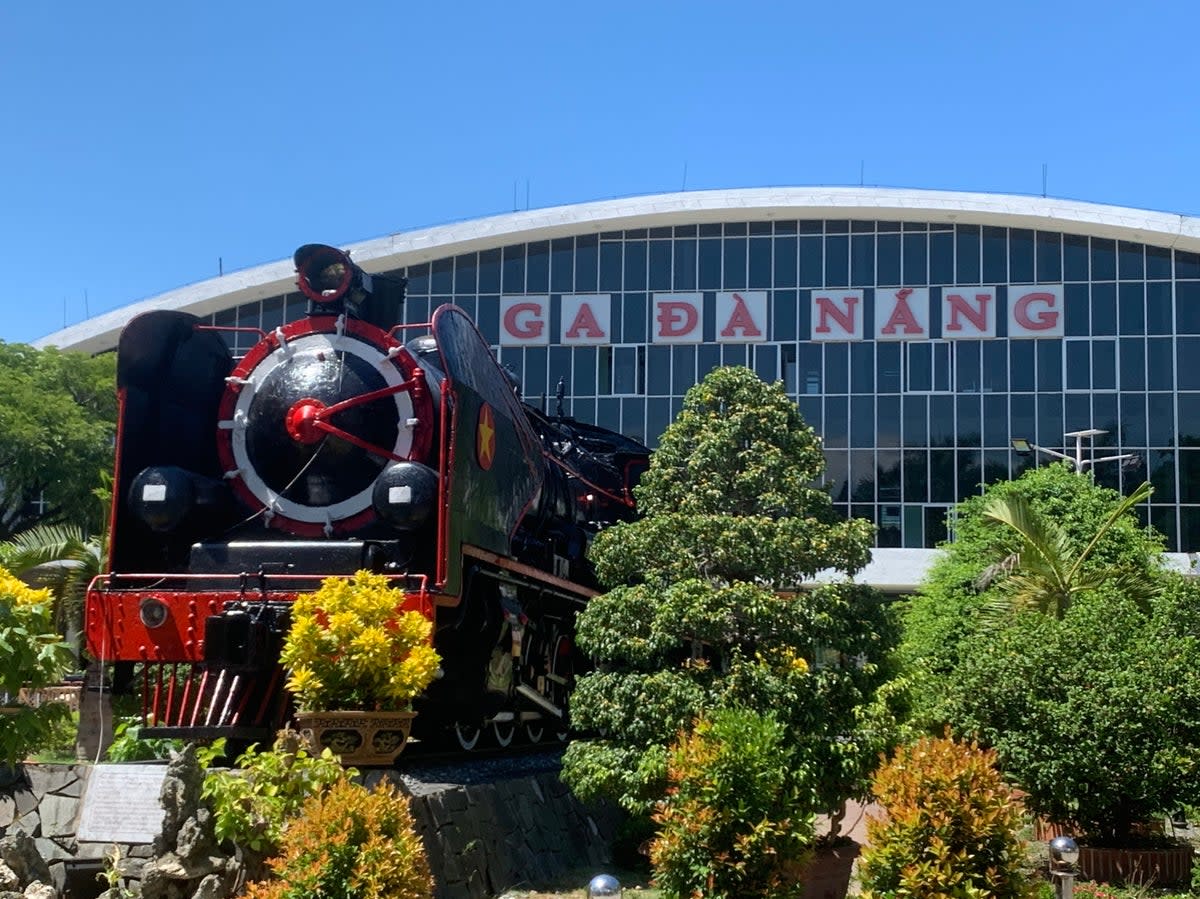
I have a couple of tips for anyone intent on travelling through Vietnam in its most sustainable and charismatic way; ie, by train.
The first is that the nation’s iconic Reunification Express is actually six different trains, mostly composed of sleeping cars, moving at regular intervals between Ho Chi Minh City (formerly Saigon) in the south and Hanoi in the North. And the second is that the designated ‘hard sleeper’ is in fact just as, er, un-hard as the ‘soft sleeper’. Despite costing less.
I’d worked out the first fact from studying the Vietnam Railways timetable beforehand, but I didn’t realise that ‘hard’ was in fact just as soft as ‘soft’ until I turned up at Saigon station after dark on a monsoon-soaked evening.
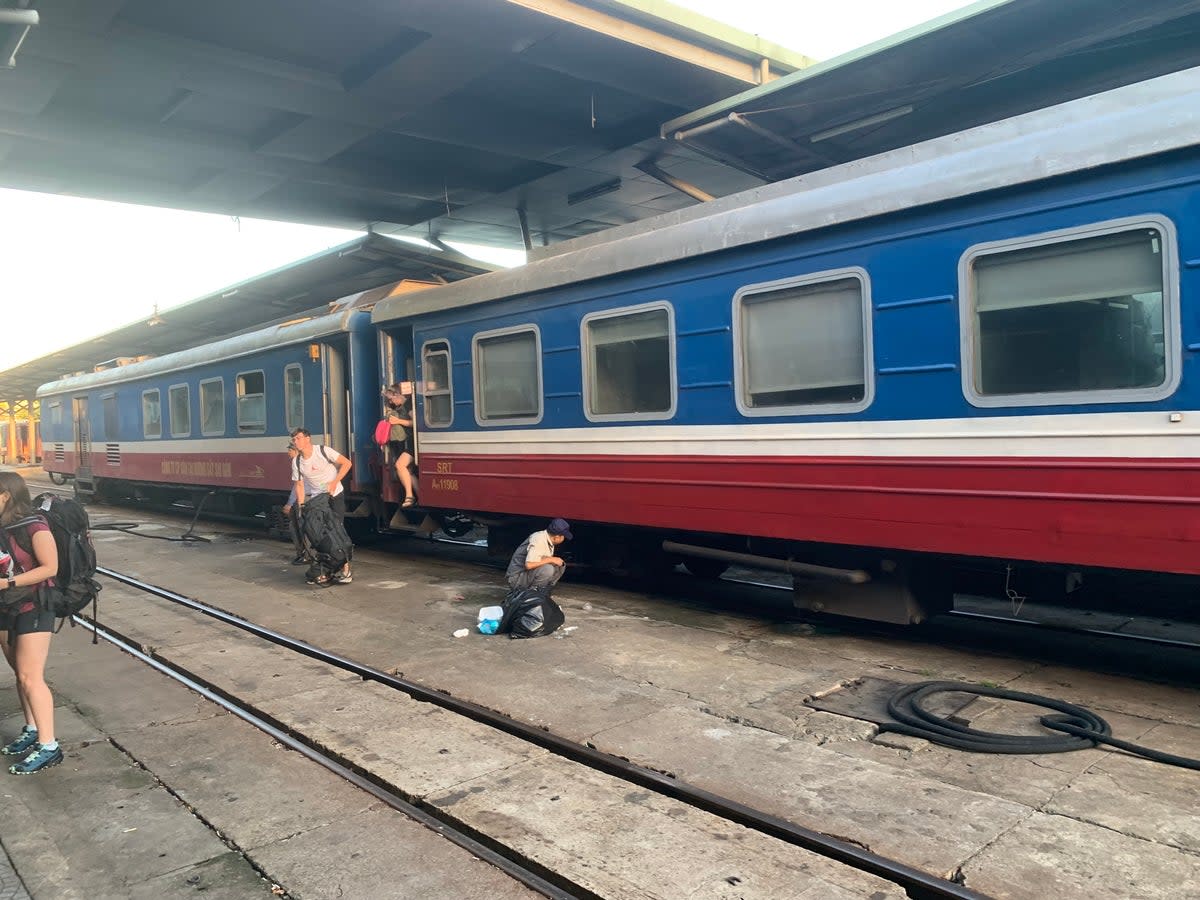
On the map, Vietnam looks a bit like an upside-down lamb chop. It is a long, thin curve of a country with a bulge at the top to accommodate Hanoi, and with Ho Chi Minh City (HCMC) lingering down at the bony bottom. The railway connects the two, running mainly along the coast, in a 1,072 mile journey that was originally created in colonial days when Vietnam was ruled by the French.
Read more on inspiring rail journeys:
More recently, the railway was one of the first pieces of infrastructure to be restored at the end of the savage Vietnam War, which pitted north Vietnam against the south (who were famously aided by the Americans). Accordingly, the trains that started to run on it were soon christened the Reunification Express.
Today, to do the whole journey would take 34 hours, but why on earth would you want to do that, when the route strings together key destinations such as Nha Trang, Hoi Ann, Danang and Hue? And the presence of several trainsets working the route means that you can choose to travel from point to point either by daylight, or after dark.
I learned more from talking to passengers on the train than I did from any guidebook
The Express that awaited me that night in rainy HCMC was trainset SE2. I’d made an online booking, so I had a voucher on my phone that let me through onto the platform. The locomotive may have had that granular sheen of painted-over rust, but onboard the carriages seemed clean, well organised and properly airconditioned.
My hard sleeper turned out be a berth in a six person cabin, with a thin mattress, a pillow, a sheet and a blanket. There was a light to read by, and a socket to recharge my phone, so not really hard at all. I later learned that the only difference from the soft sleeper is that the latter’s cabins are for four people, not six, and are often booked in their entirety by tourist couples who want to ensure their privacy. That wasn’t a priority for me.
Among the five others sharing with me was Tri, a sixty-something engineer who’d been one of the Vietnamese boat people. He’d fled what the locals call ‘the American war’, and ended up eventually in the UK, where he’d got a scholarship to Oxford. I learned more from talking to him on the train than I did from any guidebook.
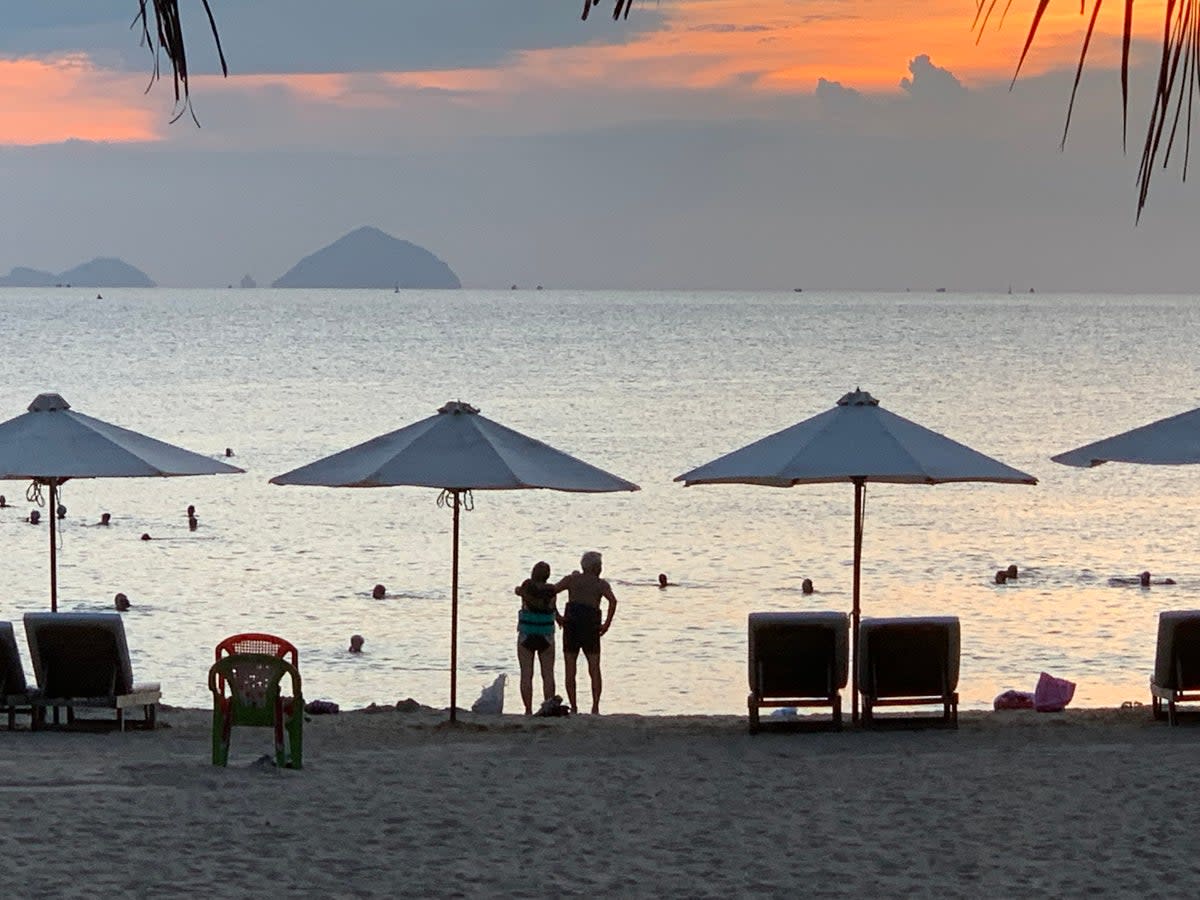
The only disadvantage of train SE2 was that it deposited me into the beach resort of Nha Trang at 4.15 in the morning, but Vietnamese towns wake up at 5am. The hotel I’d booked was happy for me to rest by the pool, and when the sun came up the sea was already full of swimmers.
The next section was from Nha Trang to Danang, also an overnight trip, with another relatively early arrival. Luckily, the taxi drivers at the station knew exactly what I wanted: a 30 minute ride to the gorgeous Unesco-registered former river port of Hoi Ann. Whereas Nha Trang had been fairly empty of tourists, here the pastel yellow shophouses were thronged with visitors from Asia and Europe, and in the evening its river was patterned with lantern-lit sampans.
I chose to do the next section of my journey, the three-hour ride from Danang to the former imperial capital of Hue, by daylight, because this is where the train struggles out along a steep peninsular, revealing glimpses one sandy bay after another – as yet uncolonized by tourism.
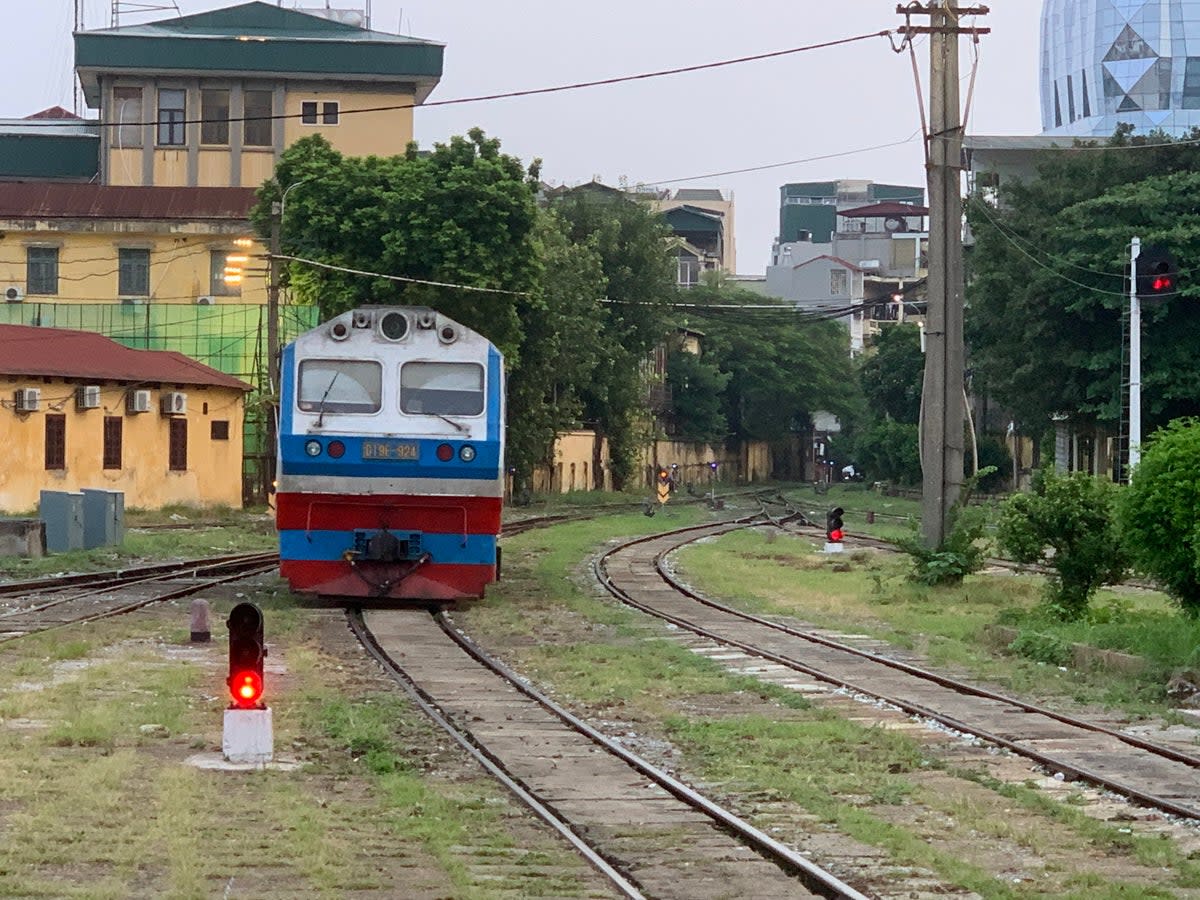
In Hue I rented a bicycle and headed up the Perfume River to visit elaborate tombs of the former emperors, returning to town in the evening to join the locals in slipping into the river to cool off.
The last section of my journey was the longest of the overnights: the 14-hour journey all the way to Hanoi. By now I was well used to falling asleep on these trains. As a rule, the Reunification Express isn’t very express-like, jogging along instead at a steady pace, because to travel too fast would be to rattle and bang and make it hard to sleep.
This one, as with the others, had a catering car, but its main task was to resupply the cabin attendants with noodles and boiled eggs to sell to passengers. Personally, I would have preferred a dining car to sit down in, to have a sociable evening meal to mark the end of my odyssey. But that wasn’t to be.
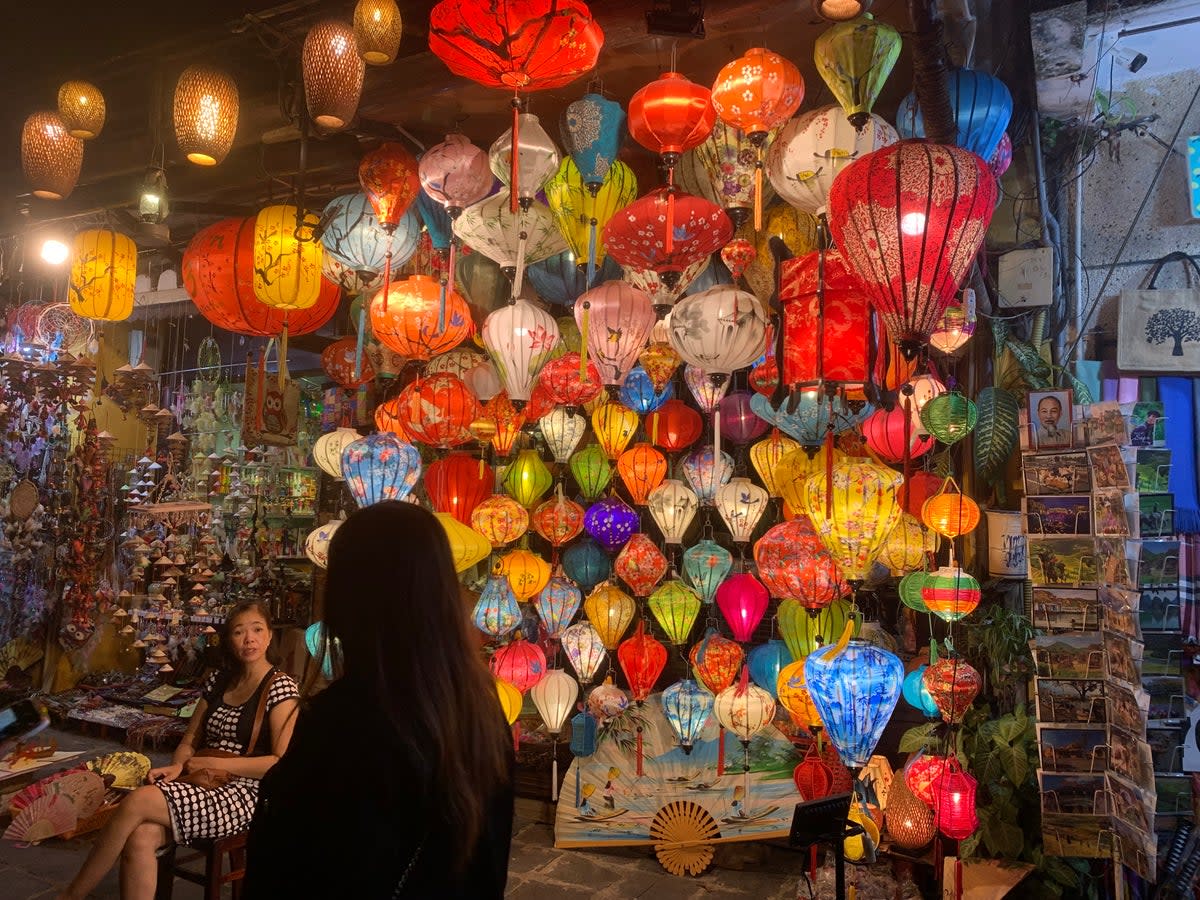
In the end, though, this was a minor consideration. With every overnight journey costing less than £40, saving me the price of an overnight hotel and ensuring I didn’t waste any precious daylight on essential travel, the Reunification Express had more than served its purpose.
Read more on experiencing the best of Spain and Morocco by rail
Travel essentials
Timetables and booking are possible on vietnam-railway.com; Andrew booked his tickets via the specialist website baolau.com.